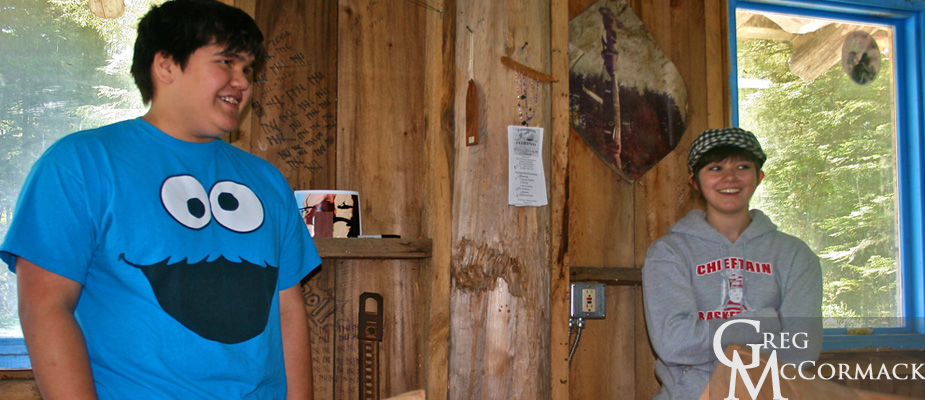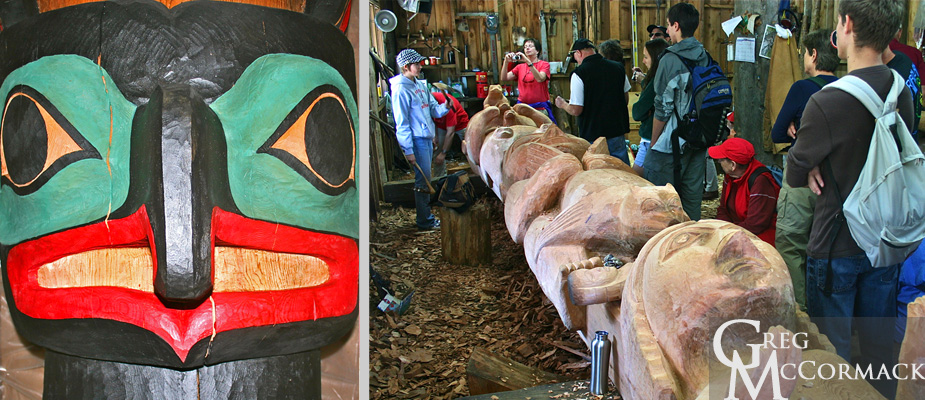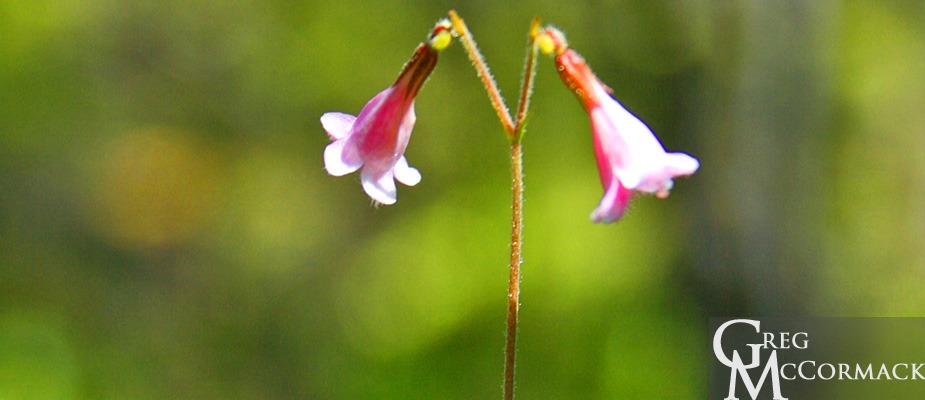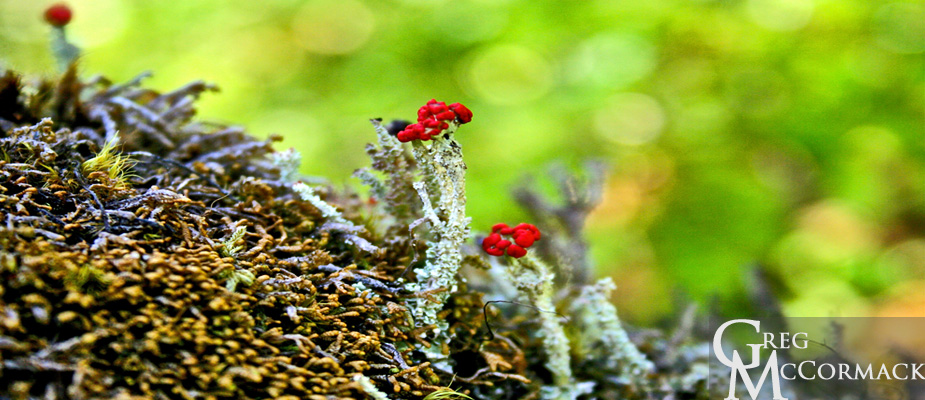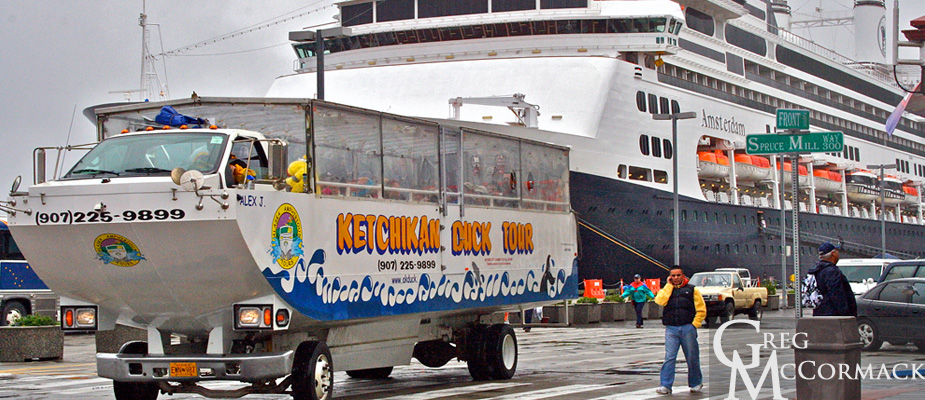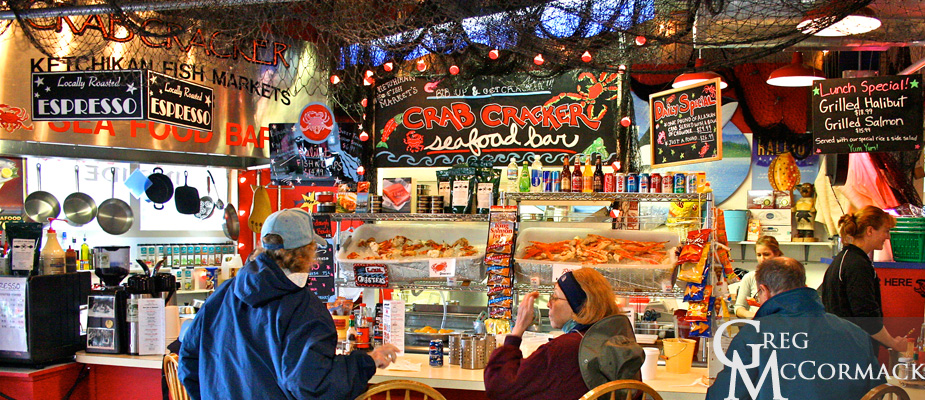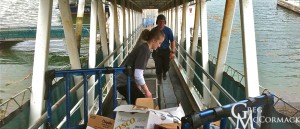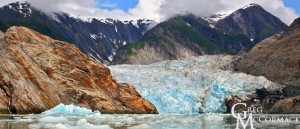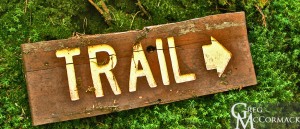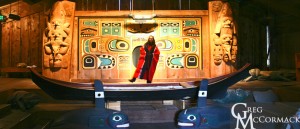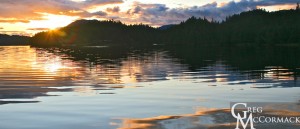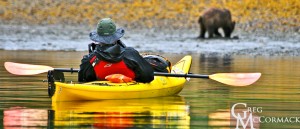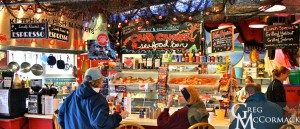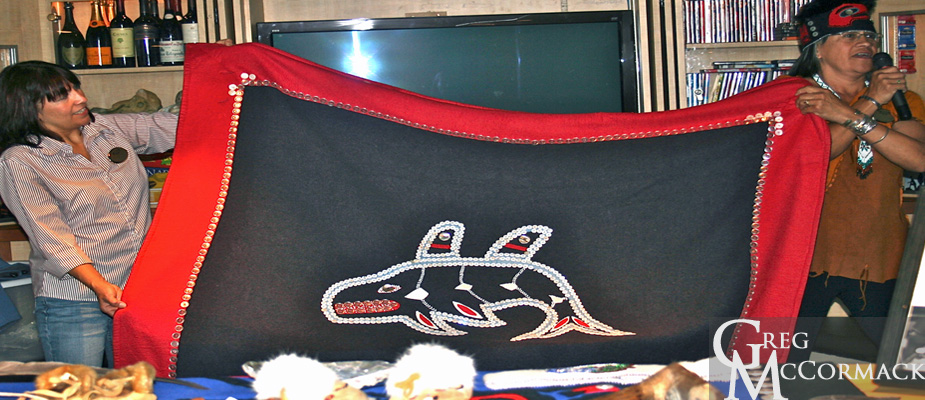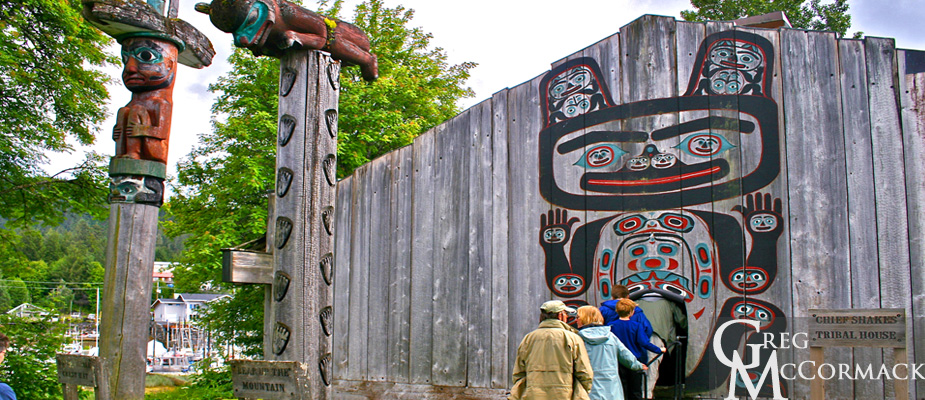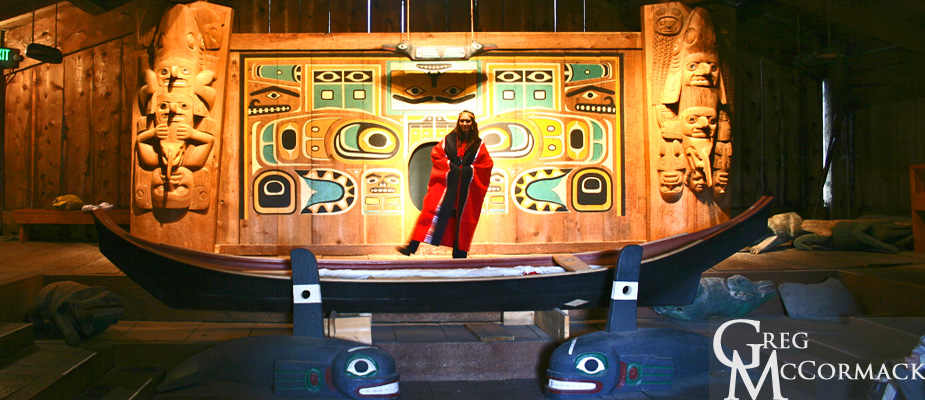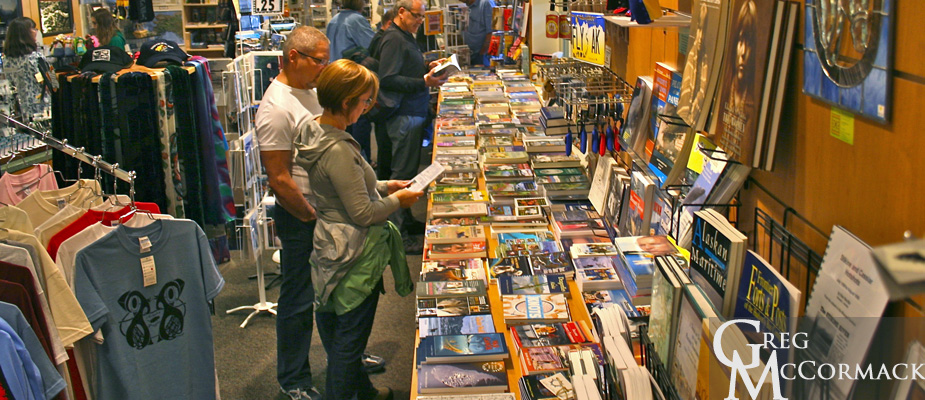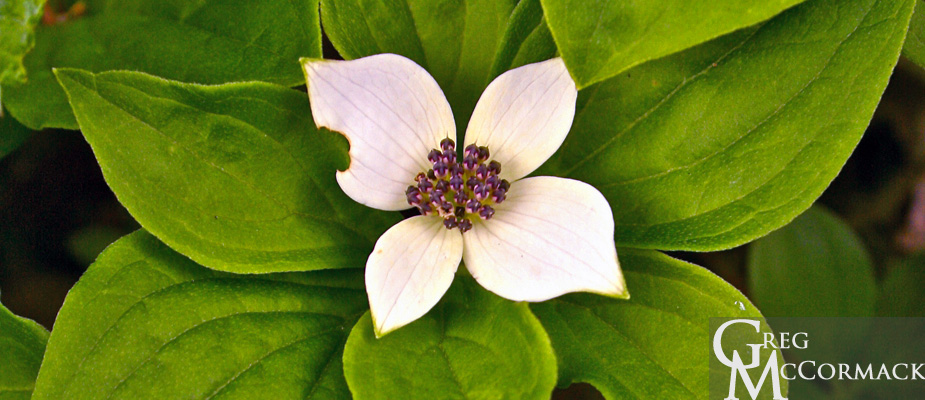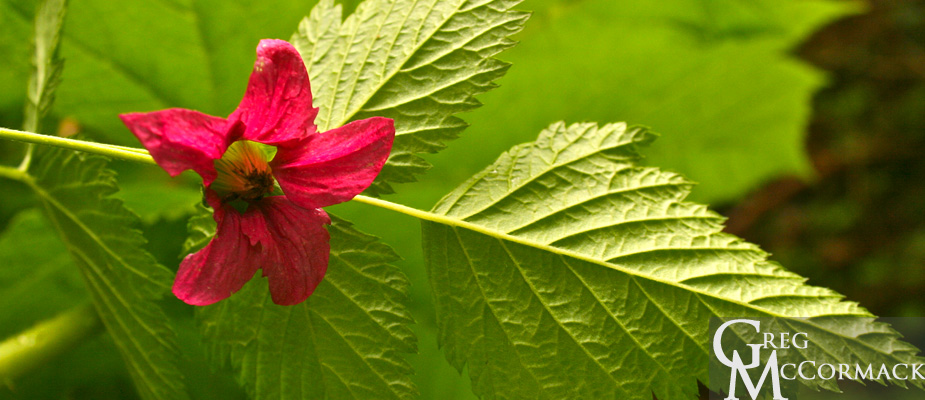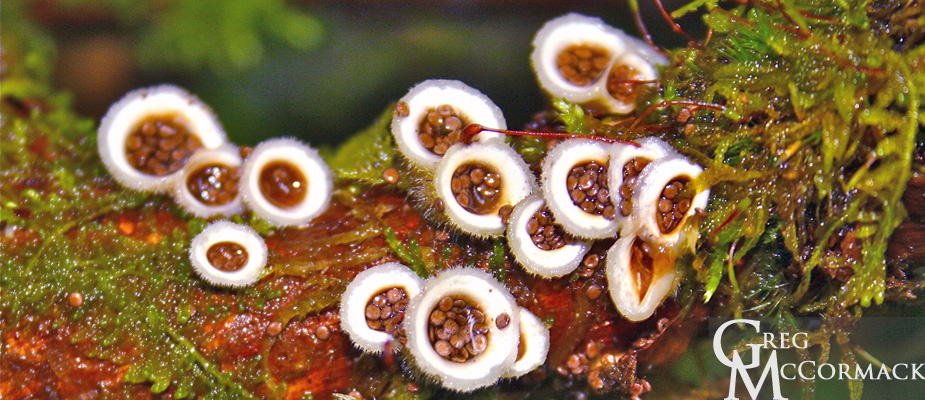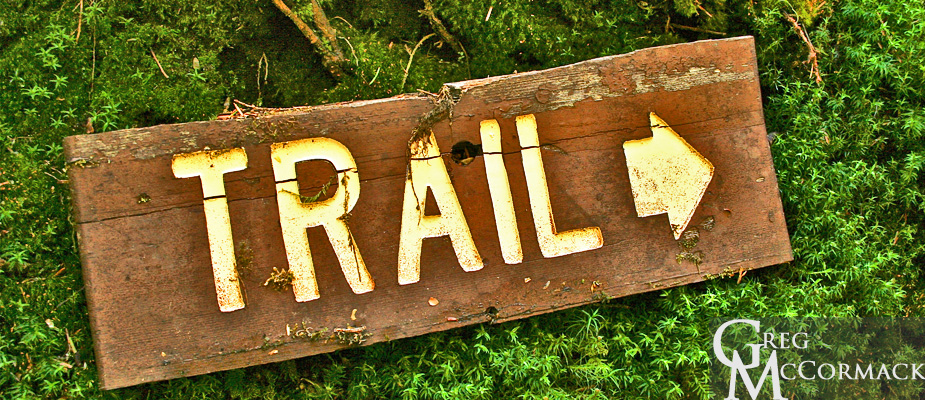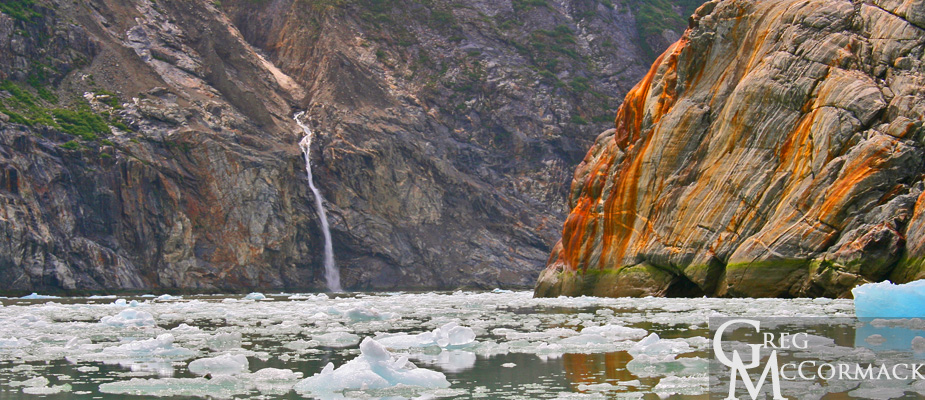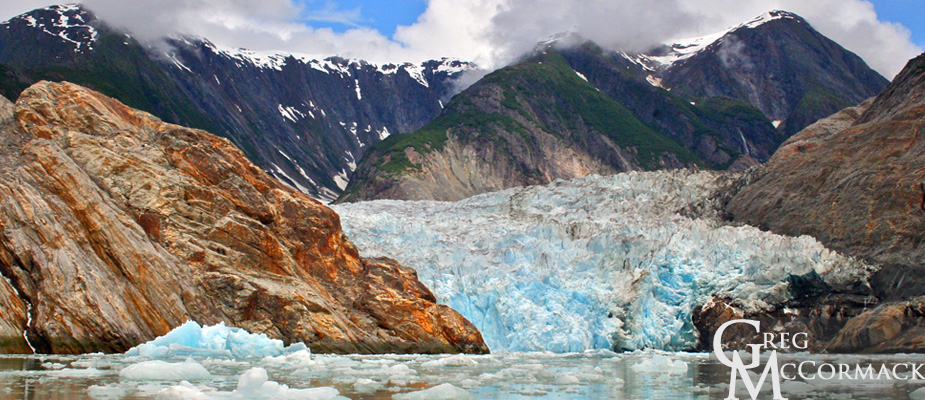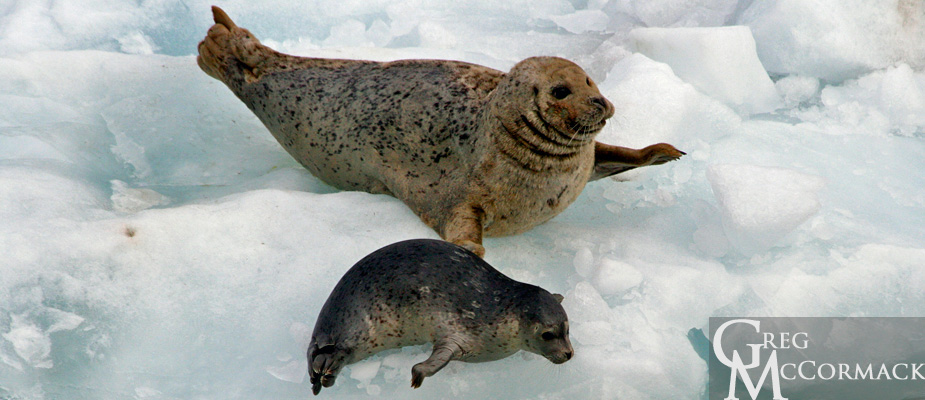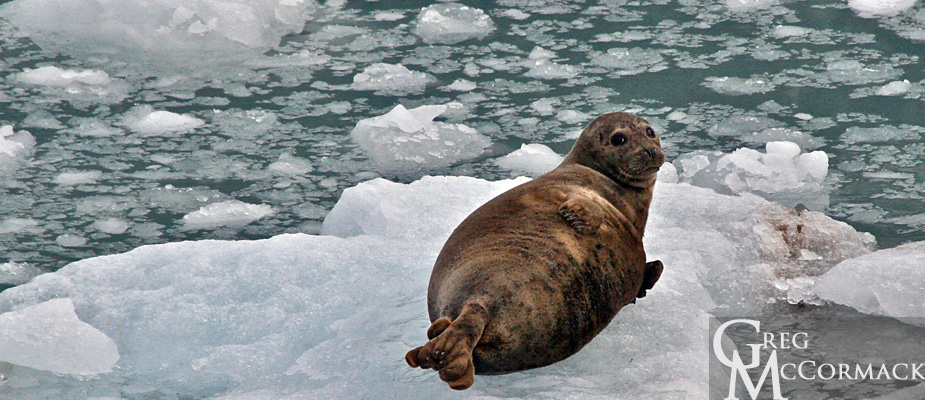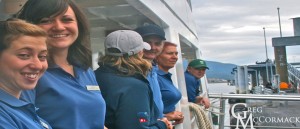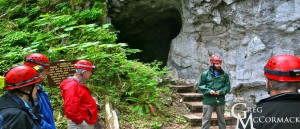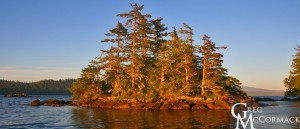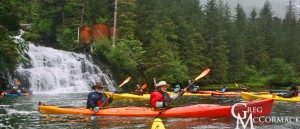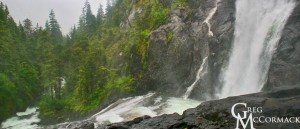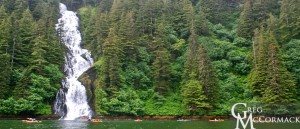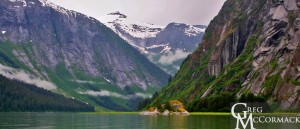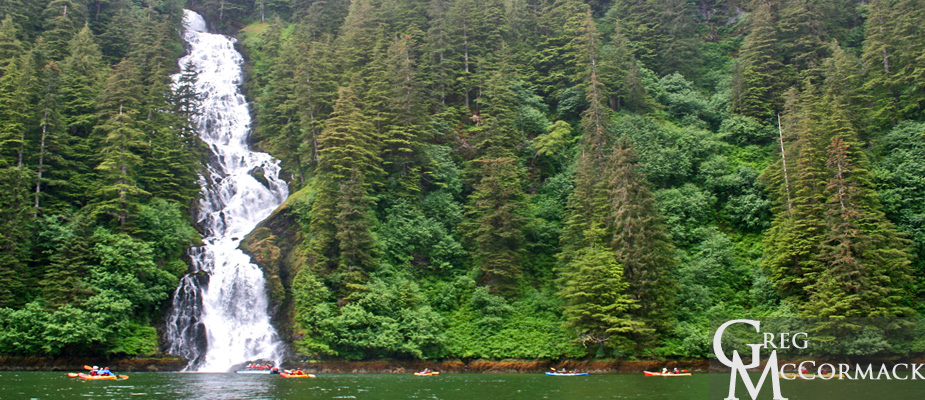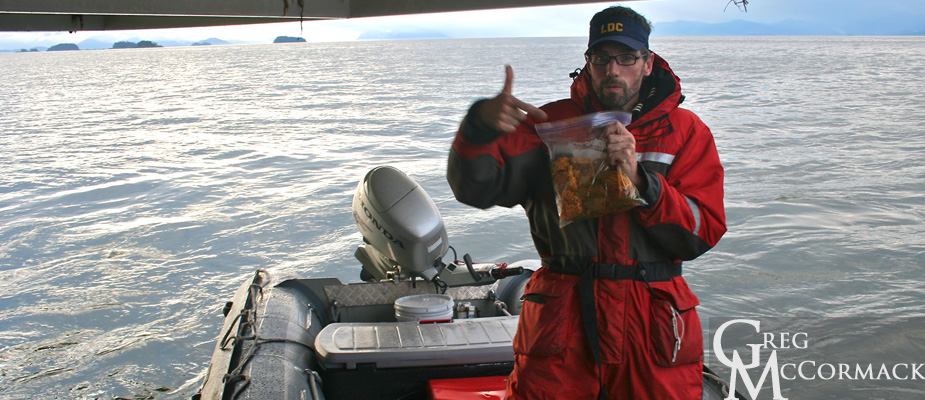Search results
Monday | July 11
September 26, 2011 by admin
Filed under InnerSea Discoveries
Klawock
“The white man must treat the beasts of this land as his brothers. What is man without the beasts? If all the beasts were gone, we would die from a great loneliness of spirit…for whatever happens to the beasts also happens to the man. All things are connected. Whatever befalls the earth befalls the children of earth.” –Chief Seattle, Puget Sound Suwamish Tribe 1854
More sunshine! We awake early and enjoy the slow cruise and docking at the pier in the town of Klawock, located on the windward side of Prince of Wales Island.
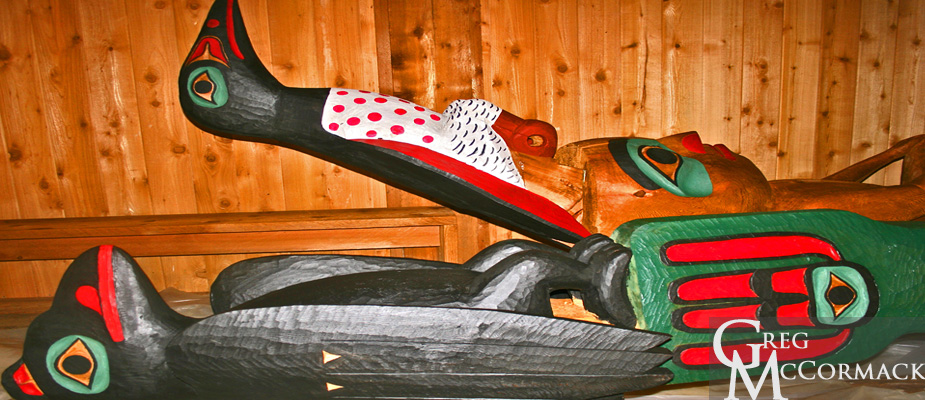
Our Tlingit hosts take us on a walk to see the totem-carving shed.
We also see the longhouse that holds the newly carved and painted totems.
A ¼-mile away behind the local shopping mall lies an empty lot that has dozens of old totems lined up in a row, exposed to the sun and rain. On the 1-mile walk back toward the ship, we visit the totem park at the center of town. Celebrations and pole-raising will take place in early August for 5 or 6 totems. Years of hard work and carving have gone into these amazing totems.
I have a couple of volunteers help me with a plankton tow on the pier. The pier lies in the middle of an estuary, where the river meets the sea. We can see the bounty of life floating beneath the ship including schooling fish, ctenophores and the lions mane jellyfish.
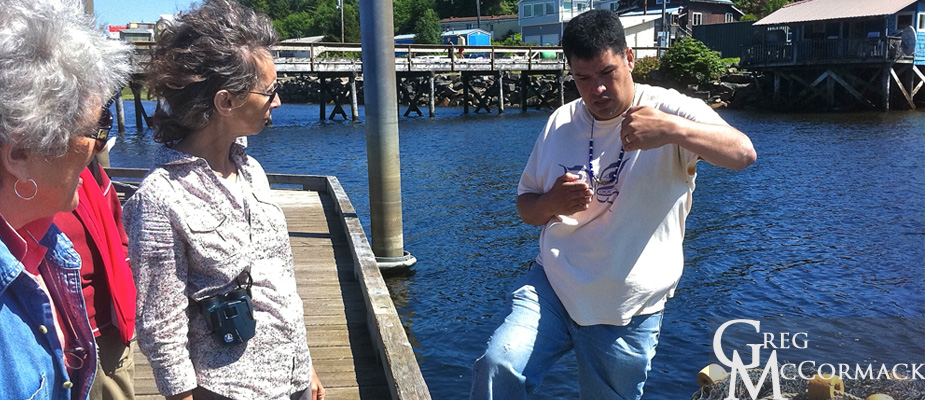
Back aboard, I set-up two stereoscopes and pour the contents of the plankton tow into specimen dishes for observation.
In the afternoon, we are back in Sea Otter Sound. Our wildlife spotters are able to find a couple of sea otter rafts. An announcement from the bridge alerts guests about a small-craft advisory in effect. Therefore, we won’t be crossing Chatham Strait over to Baranof Island.
As a result of the small-craft warning, we’ll be looking at an itinerary change that we all will be excited about. It sure is appreciated when folks on an expedition-style voyage have a flexible attitude, adapting to different circumstances!
The unknowns on any trip add to the excitement! Our expedition leader and captain spend hours pouring over the charts to determine what would provide the most interesting alternative (to sea-sickness and possible damage to items on the ship).
Sunday | July 10
September 26, 2011 by admin
Filed under InnerSea Discoveries
El Capitan
“Everybody needs beauty as well as bread, places to play in and pray in, where nature may heal and cheer and give strength.” –John Muir “The Mountains of California”
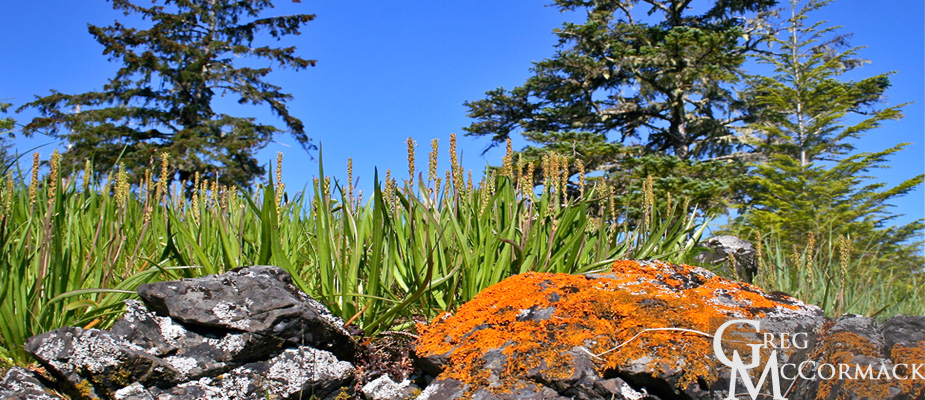
All of our guests are asked to go through our three “station rotation” trainings in kayaking, stand-up paddleboarding, small boat and bear safety.
Each “evolution” occurs in a different area of the ship (two in the lounge and one on the top deck).
After grabbing paddle jackets and depositing them in the lockers, adventure-seekers are ready for disembarking on our first full day of activities at Prince of Wales Island.
We anchor at the north end of El Capitan Passage where Dry Pass enters a bay approximately ½ mile wide by 3 miles long.
Despite the fact that there has been heavy logging in the past (clear cuts are visible along with a logging road on the north shore that leads to a small, private lodge), the place is peaceful and scenic.
My job this morning is to provide a “kayak clinic” for beginning kayakers out in the bay. I demonstrate paddling techniques, bracing, how to turn around, get the rudder up and down among other pointers.
“We could try the ‘Eskimo Roll’ if you’d like?”, I asked jokingly. The temperature of the waters here are in the high 40’s to low 50’s Fahrenheit, or about 10 degrees Celsius. If we were to practice rolling and submerging, we’d want to don dry suits.
Highlights along the shoreline include a Sitka black-tailed deer (doe with fawns) browsing on grasses above the beach wrack or strand zone, bald eagles at their nest, breaching salmon and best of all: Sunshine!
On our way back to the ship, I recruit other kayakers to help find macro-algaes, in particular the bull kelp. The pneumatocyst or air float can mimic the head of an otter, especially when there is a wind chop or swell on the sea surface. We find some un-attached Nereocystis leutkeana floating with its holdfast attached to a tiny rock. We haul it aboard and put it in a bucket for further examination later today.
In the afternoon I lead a less intense version of a forest walk that doesn’t include 367 steps up a steep hill to a cave.
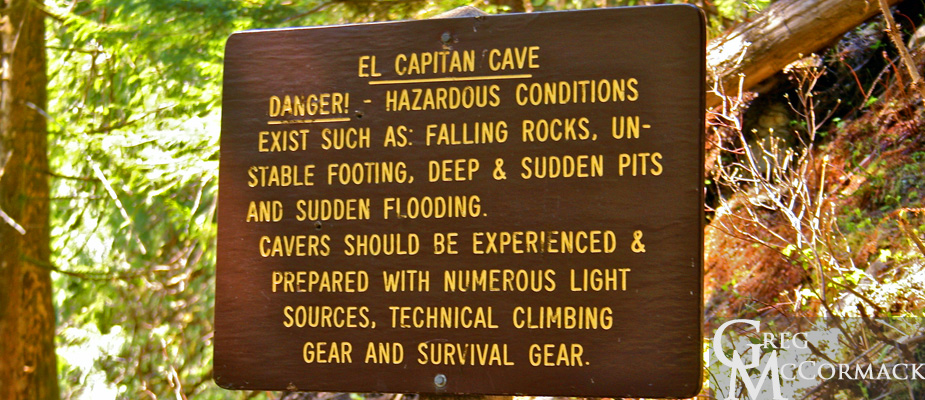
After my introduction explaining safety in bear country, I address my group of intrepid travellers with the theme for the day, one that has been a favorite of mine over the four decades that I’ve been leading interpretive walks:
“Folks, instead of hiking, we will saunter—serendipitously–along these Forest Service roads. Horace Walpole, a British writer in the mid-1700’s, wrote a fairy tale called the ‘Three Princes of Serendip’. They had a knack for the unexpected, for discovering things that they had no idea they’d find. So let’s use all of our senses and see what we might come across over the next 90-minutes.”
Our finds included the stinky raceme of the skunk cabbage, scatological findings from several mammals, squirrel pine cone middens, flowers, mushrooms and various birds that I identified “by ear”, amongst other delightful finds.
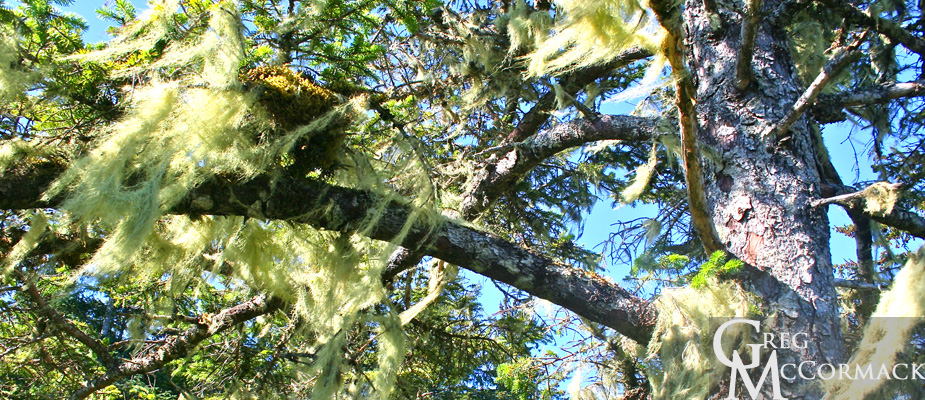
Back aboard, I give a talk entitled “The Multifarious Uses of Nereocystis leutkeana”, a demonstration of the marvelous seaweed called the “bull kelp”. There are a lot of histrionics involved, including audience participation and hand-held specimens.
Here’s a few of the highlights:
• Bull Kelp is an annual that can grow to 20 meters
• The range of this nearshore brown algae is from central California to Alaska
• The decimation of the (urchin-eating) Sea Otter by the Russians led to an increase in the herbivorous (kelp-loving) sea urchins and a subsequent decrease in kelp and what the kelp forest harbors, including many dozens of invertebrates and fishes
• Native American uses include food and medicine, and recreational uses including ceremonial speaking tube, musical instruments, siphoning hose, jump rope, lion tamer, target practice, etc.
I entertain folks by using a knife to cut the kelp specimens and volunteers entertain everyone by using the hollow stipe as a trumpet-like horn, bugling the announcement for dinner!
Saturday | July 9
September 14, 2011 by admin
Filed under InnerSea Discoveries
“If I had influence with the good fairy who is supposed to preside over the christening of all children, I should ask that her gift to each child in the world be a SENSE OF WONDER so indestructible that it would last throughout life, as an unfailing antidote against boredom and disenchantments of later years, the sterile preoccupation with things that are artificial, the alienation from the sources of our strength.” –Rachel Carson
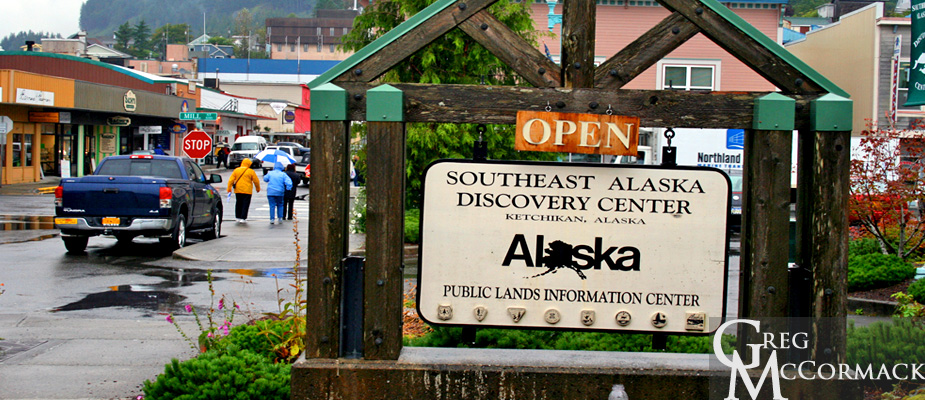
All of the M/V Wilderness Discoverer crew forms a line off of the ship on the dock and we shake hands, hug and express our fond farewells to passenger-guests. Folks are very thankful for the natural history interpretive talks I gave over the week. My favorite compliment was one that spread over the ship about a search engine like Google called “Greg-gle”. A guest explained: “Instead of finding an answer by Googling, we think the best way to get an answer is to Greg-gle a query. You were so full of amazing answers on a multitude of subjects.”
One passenger said I would make an amazing minister with my views on Nature. Another said that I was more than a PhD…that I must have several honorary degrees with all of my knowledge on a variety of subjects. An Aussie stated I should run for President and that I would be famous in all of Australia for my ice-swimming and imitation of a seal on an ice-berg.
My fellow colleagues get a boost from the many compliments they received for a job well done. Each one of us, with our outgoing personalities and the pride we take in our jobs, makes small-ship cruising a big hit in the cruise industry. We feel good in knowing that our new company is profitable, as we hear rumors that InnerSea Discoveries may be purchasing some new vessels for upcoming itineraries next year. Kudos to the home office for their expertise in choosing this itinerary and recruiting great guides and crew. We are all giving memories for a lifetime for our guests.
After preparing the ship for the next group of guests, we have about an hour to ourselves onshore for R&R or personal business. It is fun to see how busy this town can get with a huge cruise ship in port!
where is gmack now? innersea discoveries expedition week 10
It has been an exciting week on the InnerSea Discoveries Expedition Click Links Below to read daily updates from Week 10 of the Trip:
July 2 – July 9, 2011
Saturday | July 2
TURNOVER DAY = SWABBING THE DECKS
Sunday | July 3
GLACIER CALVING, SEALS & WHALES
Monday | July 4
HAPPY 4TH OF JULY, EVERYBODY!
Tuesday | July 5
MOOSE PELLETS
Wednesday | July 6
CHIEF SHAKES LODGE
SNORKELING AND BANJO PLAYING
Friday | July 8
CLAM-EATING BEAR
Saturday | July 9
“WE NEED THE GREGgle APP!”
Wednesday | July 6
September 14, 2011 by admin
Filed under InnerSea Discoveries
“We abuse land because we regard it as a commodity belonging to us. When we see land as a community to which we belong, we may begin to use it with love and respect.” –Aldo Leopold
Onboard the vessel right after breakfast, we have a couple of Tlingit guests give an informal lecture with songs and a “show and tell” session in the lounge.
We learn many fascinating things about the dynamic Tlingit culture that has thrived here for a very long time.
This is followed by excursions to see petroglyphs, a performance at Chief Shakes lodge and jet boat tours up the diverse Stikine River.
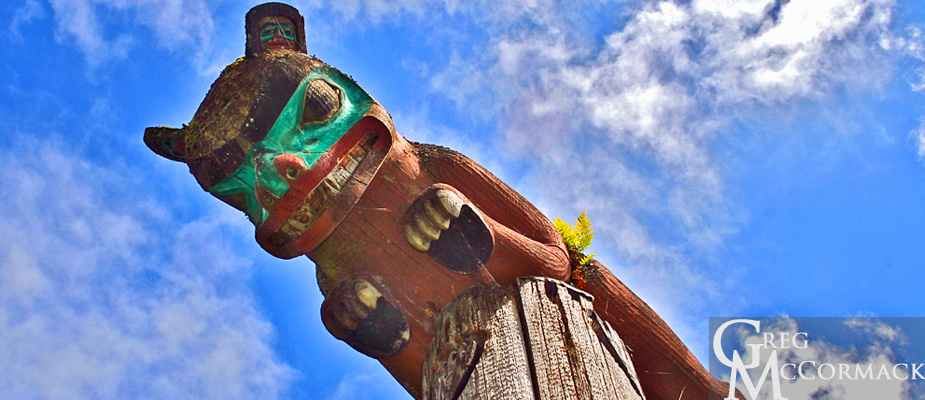
Many folks make the trip to the Nolan Center and purchase natural and cultural history books in the bookstore, among other gift items.
Tuesday | July 5
September 14, 2011 by admin
Filed under InnerSea Discoveries
“O’ Earth, What changes hast thou seen?” –Alfred Lord Tennyson
We offer several activities for guests, including paddle boarding, kayaking and a couple of different hikes, including all-day and half-day hikes. I co-lead a kayak along the lee side of Ruth Island and later a half-day hike up the Patterson River. There are lots of beautiful, verdant plants to point-out to my fellow adventure-seekers.
We see bunchberry dogwood, false lily-of-the-valley, skunk cabbage, salmonberry, several species of fungus and many other herbs, shrubs and trees.
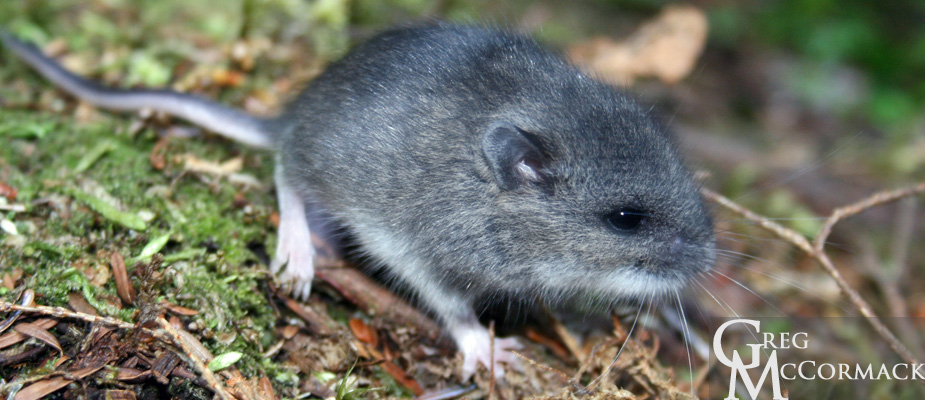
Deer Mouse
Our hike is along ATV trails. We see evidence of old cabins and (hard-to-believe) some dung from cows! Apparently this is not part of Tongass National Forest. Our scatological discovery-of-the-day were moose pellets. I pick-up a hand-full and interpret the fascinating life history of this huge Cervid species: “The moose get quite large, males up to 1600 pounds and females up to 1300 pounds.”
“Moose are herbivorous, feeding on deciduous trees such as willow and birch. Moose will eat as much as 40 pounds of willow leaves in a day, enabling the growth of huge antlers.”
“Antlers are shed in the late fall, early winter. Males are solitary except for the rut. The rut is in the fall. This is when the testosterone in the males is at its peak. Males battle it out for access to females. Subordinate male bulls are sometimes referred to as “sneaker” males for sneaking into a harem while the dominant male is off fighting another male.”
We enjoy the riparian corridor adjacent to the Patterson River. It would take all day to follow the trail up to the Patterson Glacier.
Rumor has it that our company dropped-off several kayaks by helicopter on the lakeshore just a couple of miles from the face of the glacier. One group this summer has made it all the way up with the owner of the company leading the intrepid hikers. It was a strenuous adventure of over 10 miles.
Back aboard the WND, we traverse the famous Wrangell Narrows that separates Mitkof and Kupreanof Islands. Anchorage is just a few miles from Wrangell, which lies near the 17-mile wide delta of the mighty Stikine River.
Sunday | July 3rd
September 14, 2011 by admin
Filed under InnerSea Discoveries
“Never before this had I been embosomed in scenery so hopelessly beyond description. Tracing shining ways through fjord and sound, past forests and waterfall, islands and mountains and far azure headlands, it seems as if surely we must at length have reached the very paradise of the poets, the abode of the blessed.” –John Muir
At 06:00 the anchor is lifted and the Wilderness Discoverer begins its journey up the 30-mile long Tracy Arm fiord. I like to tell folks that we are all taking a trip back 15,000 years to the Pleistocene Epoch to see what much of the northern latitudes on Earth were like at the southernmost extent of the Wisconsin era glaciation. Basically a person could strap on some skis and continue on ice from Tracy Arm south to present-day Olympia, Washington and head then head east to Cape Cod, Massachusetts.
Tracy Arm—Fords Terror was designated a wilderness area in 1980 with President Jimmy Carter’s passage of the Alaska National Interest Lands Conservation Act (ANILCA). Prior to this it had been designated a National Forest Scenic Area in 1960 and 10 years later a Wilderness Study Area in recognition of the opportunities for solitude and its dramatic beauty.
It was President Lyndon Johnson that signed the Wilderness Act in September of 1964.
It states:
“In order to assure that an increasing population, accompanied by expanding settlement and growing mechanization, does not occupy and modify all areas within the United States and its possessions, leaving no lands designated for preservation and protection in their natural condition, it is hereby declared to be the policy of the Congress to secure for the American people of present and future generations the benefits of an enduring resource of wilderness.”
Everybody seems to appreciate being a visitor to this wilderness as they are out on decks to soak-in the scenery, admire ice-bers and to look for wildlife.
We offer small boat tours. Adventure-seekers enjoy close-up views of the Sawyer Glacier calving ice and the dramatic mountain scenery. I point out the waterfall, located 1.5 miles away from the face of the Sawyer Glacier. When I first started leading folks here in the early to mid-90’s, the glacier was close to this cataract.
People are amazed to see how far it has receded and how much thinning of the glacier has taken place. The barren rock and trim-line of vegetation high up above the recently de-glaciated rubble landscape are reminders of a changing climate.
Harbor seals are spotted on the ice “growlers” or brash ice. Some are seen with pups that were recently born. It takes 6-weeks before pups are weaned off of the mothers milk and are on their own to search for food.
Arctic terns ply the waters, catching schooling fish for their developing young that await in the rock gardens bordering the fiord. Gulls fly back an forth in front of the glacier waiting for the next calving that will churn-up small fish and shrimp for easy-pickings.
Our afternoon and evening is spent looking for and watching whales in Frederick Sound.
Saturday | July 2
September 14, 2011 by admin
Filed under InnerSea Discoveries
“If there is magic on this planet, it is contained in water.” –Loren Eisely
The M/V Wilderness Discoverer lifts anchor and motors north through Gastineau Channel and docks beneath the rising peaks of Mount Roberts and Mount Juneau. All (departing passenger) luggage is taken off of the vessel and carried up the dock ramp to the waiting buses.
A fond farewell takes place between crew and guests as the latter disembark to hug and shake hands with their favorite crew members on the dock. Great memories and sad goodbyes!
The excitement for the morning is when I crashed a fully-loaded, heavy rolling cart on the ramp leading down to the pier. Luckily none of the eggs in the 13-dozen box broke.
Note to self: Do not use a cart that lacks hand brakes when the tide is low. All of the carts but one has a hand brake. Kristen helps me re-load and we get back to transporting stores from truck to ship.
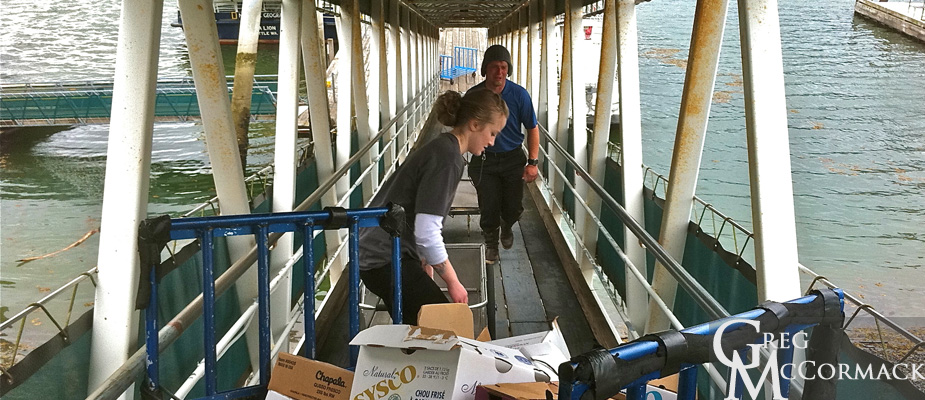
All available hands on the ships crew prepare for a new group of passengers that will board the vessel at 16:30 hours. All decks are swabbed, port holes washed, sheets changed, cabins and heads cleaned, dirty laundry and garbage hauled off ship, and galley stores stowed.
After our welcome aboard orientation meetings with the deck, engineering, hotel and expedition leads, the M/V Wilderness Discoverer pulls away from the Juneau dock and heads south in Gastineau Channel. We spot some Humpback Whales feeding just outside of the Taku Inlet and enjoy the sunset on the outside decks.
Our destination for tomorrow will be the one of three spectacular fiords in the Tracy Arm—Fords Terror Wilderness, about 46 miles south of Juneau. The area encompasses close to 700,000 acres of rugged Coast Range mountains bordering Holkham Bay, the spot where we will be anchoring tonight.
The three dramatic fiords are Endicott Arm, Fords Terror and Tracy Arm, all of which trend west-to-east through the Coast Mountain Range. The three tidewater glaciers drop down from the Stikine Icefield and regularly calve ice bergs into the ocean.
Where is gMack now? InnerSea Discoveries Expedition Week 9
It has been an exciting week on the InnerSea Discoveries Expedition Click Links Below to read daily updates from Week 9 of the Trip:
June 25 – July 1, 2011
Saturday | June 25th
Ketchikan
Sunday | June 26th
El Capitan Passage, Caves and the Oyster Pick-up
Monday | June 27th
Klawock and Sea Otter Sound
Tuesday | June 28th
Little Port Walter
Wednesday | June 29th
Patterson Bay: Scat and Cataracts!
Frederick Sound
Friday | July 1st
The Green Flush and an Ice Swim
Thursday | June 30th
September 10, 2011 by admin
Filed under InnerSea Discoveries
Frederick Sound
Last night we motored into this most stunning of bays on Baranof Island. The majority of guests decide to kayak up the fiord to the splendid waterfall that seems to fall out of the sky down a precipice covered in conifers. Just beyond at the head of the bay on about two hundred acres of mudflats and meadows, a grizzly bear feeds on grasses. Kayakers line themselves along the edge of the river opposite the bear. A bald eagle is perched on a stump, providing another photographic opportunity.
What is the difference between a BROWN bear and a GRIZZLY bear, you may ask? They are the same species, Ursus arctos. The coastal grizzly is called a brown bear. It is significantly larger than the interior grizzly bear because of diet and climate.
Salmon are in abundance along the coast of Alaska. Because the waters of the Gulf of Alaska warm the air enough to moderate the temperatures along the coast, brownies can stay active a couple of months longer than the interior grizzlies. The latter have to deal with temperatures that drop well below freezing, triggering the hibernation response.
We spot a brown bear on the flats and kayak upriver a few hundred meters to get a better look. An eagle perched on a beached stump above the mud-flats was a favorite photo-subject for kayakers.
Later in the day, I get on the marine radio and make a call to the Alaska Whale Foundation. I talk with world-renowned humpback whale researcher Dr. Fred Sharpe. He says that he is available to join us for a talk aboard the ship! We meet him in Frederick Sound and he motors over in his small Zodiac. Fred and I have been friends for over 20 years. He answers lots of questions and entertains guests in the lounge with his humor and knowledge.
After just a half-hour, the swells on this inland sea magically disappear and become glass-like. Humpback whales are spotted “around the clock” in all directions from the ships decks. We estimate at least two dozen whales blowing from just a hundred meters to a couple of kilometers away.
Before disembarking, Fred mentions the influx of nutrients and plankton as a result of the persistent winds we had throughout the morning. Frederick Sound is in the middle of a nutrient-rich geographical area. The plankton feed the schooling fish which in turn feed the leviathans.


